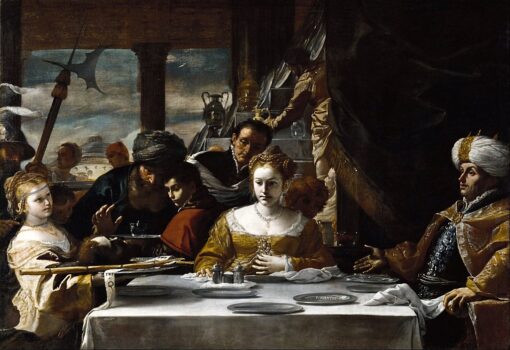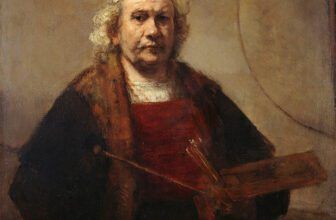What Are Mattia Preti Most Famous Paintings
Mattia Preti (1613–1699) is a celebrated figure in the history of Baroque painting. An Italian master who lived during one of the most vibrant periods of European art, Preti is renowned for his dramatic compositions, masterful use of chiaroscuro, and religious devotion conveyed through art. Often referred to as “Il Cavaliere Calabrese” (The Calabrian Knight), he stands among the great Baroque painters alongside Caravaggio, Guido Reni, and Pietro da Cortona. His artistic journey spanned Italy and Malta, and his influence continues to echo through the corridors of churches, museums, and palaces across Europe.
This article explores Mattia Preti’s story, his most famous paintings, the value and location of his works, and his enduring legacy in the art world.
The Story of Mattia Preti
Mattia Preti was born on February 24, 1613, in Taverna, a small town in Calabria, southern Italy. His early life remains somewhat obscure, but he showed artistic promise from a young age. By the late 1620s, Preti had moved to Rome, where he became immersed in the thriving art scene of the Baroque period.
In Rome, Preti studied the works of Caravaggio, whose revolutionary use of light and shadow—tenebrism—influenced Preti profoundly. Unlike Caravaggio, however, Preti adopted a more theatrical and grandiose style, merging Caravaggism with the rich coloring of Venetian painting and the dynamic compositions of the Roman Baroque.
One of the defining moments of Preti’s life was his induction into the Order of St. John (also known as the Knights of Malta) in the 1660s, earning him the nickname “Il Cavaliere.” He moved to Malta in 1661, where he spent most of his later life, leaving a significant mark on the island’s artistic landscape.
What is Mattia Preti Known For?
Mattia Preti is known primarily for his religious and historical paintings, often marked by their dramatic intensity, rich color palettes, and powerful emotional narratives. His works typically depict scenes from the Bible, lives of saints, and martyrdoms—subjects well-suited to the theatricality of the Baroque style.
He is also noted for his ceiling frescoes, particularly those in Malta, and for bringing the Baroque style to the island, influencing generations of Maltese artists.
Moreover, Preti was known for blending Caravaggesque realism with classical idealism, creating a unique synthesis that made his work both deeply human and spiritually elevated.
Most Famous Paintings by Mattia Preti
The Banquet of the Rich Glutton (Il Convito del Ricco Epulone)
Location: MUŻA – The Malta National Community Art Museum, Valletta, Malta
One of Preti’s most striking moralistic works, this painting is based on the parable of the rich man and Lazarus. The luxurious setting contrasts sharply with the spiritual emptiness of the rich man’s life, showcasing Preti’s mastery in storytelling and composition.
St. George and the Dragon
Location: St. John’s Co-Cathedral, Valletta, Malta
This dynamic depiction of St. George slaying the dragon captures the drama and heroism that typifies Preti’s style. The intense light and dark contrast brings energy and emotion to the composition.
The Martyrdom of St. Bartholomew
Location: Museo di Capodimonte, Naples, Italy
A harrowing scene of suffering, this painting exemplifies Preti’s ability to convey pain and divinity simultaneously. The raw humanity of the saint is underscored by Preti’s detailed rendering and dramatic lighting.
The Conversion of St. Paul
Location: Private collections and several copies in European museums
This biblical moment of transformation is brought to life with radiant divine light and violent motion, capturing the spiritual upheaval of St. Paul.
Frescoes in St. John’s Co-Cathedral (Valletta, Malta)
These massive ceiling frescoes narrate the life and martyrdom of St. John the Baptist. Painted over several years, they are considered Preti’s magnum opus and a defining achievement of Maltese Baroque art.Judith and Holofernes
Location: Museo Nazionale di Capodimonte, Naples
This intense biblical scene captures the dramatic moment when Judith beheads the Assyrian general Holofernes. The chiaroscuro technique emphasizes the moral and physical power of Judith.
What Is the Most Expensive Painting by Mattia Preti?
While Mattia Preti’s works have not reached the record-breaking prices of more widely known Old Masters, they are highly prized in the art market. His paintings can sell for several million dollars depending on size, subject matter, and provenance.
As of the latest available data, one of the most expensive Mattia Preti paintings sold at auction is “Saint John the Baptist Preaching”, which fetched £1.5 million (approximately $2.2 million USD) at Sotheby’s in London in 2010. Other works, especially those with religious significance or those previously held in noble collections, have sold in the $500,000–$1.5 million range.
Private sales, which often involve larger or more iconic works, may exceed these values, especially if the painting is tied to his Maltese period or features elaborate compositions.
How Many Paintings Does Mattia Preti Have?
Mattia Preti was an exceptionally prolific artist. Art historians estimate that he created over 400 paintings throughout his life. This number includes:
Large-scale altar pieces
Fresco cycles
Easel paintings
Portraits and mythological scenes
Many of these works remain in churches, museums, and private collections across Italy, Malta, and Europe. The cataloging of Preti’s work is still ongoing, with new attributions occasionally emerging as art historians re-evaluate previously misattributed pieces.
Where Are Mattia Preti’s Paintings Located?
Preti’s works are widely dispersed across Europe, especially in Italy and Malta. Here are some of the key locations where his paintings are housed:
Italy
Museo di Capodimonte (Naples): Holds some of Preti’s finest religious paintings.
Palazzo Barberini (Rome): Contains early works and portraits.
Galleria Nazionale di Arte Antica (Rome): Showcases Baroque paintings including Preti’s.
Taverna (his birthplace): The town’s museum is dedicated to his work.
Malta
St. John’s Co-Cathedral (Valletta): Home to Preti’s celebrated frescoes and several altarpieces.
MUŻA (Valletta): The national museum of art holds numerous Preti paintings, including genre and religious scenes.
Churches across Malta and Gozo: Many of these contain Preti commissions from his time as court painter to the Knights of Malta.
International Collections
The Louvre (Paris): Houses a few of Preti’s dramatic religious scenes.
The Hermitage Museum (St. Petersburg): Contains works attributed to Preti.
The Metropolitan Museum of Art (New York): Holds select paintings, often on loan or in storage.
National Gallery (London): Has minor works or those on rotation.
Because Preti painted many large altarpieces, many of his works have remained in situ, which adds to their historical and liturgical importance.
Mattia Preti’s Artistic Legacy
Mattia Preti’s legacy is multifaceted:
Maltese Baroque Architecture and Art:
Preti transformed the Maltese art scene by introducing high Baroque aesthetics, mentoring local artists, and redefining religious iconography on the island.Chiaroscuro Mastery:
He furthered the legacy of Caravaggio, not by mere imitation, but by blending it with a personal grandeur and elegance.Narrative Power:
Preti’s paintings go beyond visual drama; they tell moral stories, evoke spiritual reflection, and engage the viewer emotionally and intellectually.Knighthood and Nobility in Art:
His knighthood and courtly connections allowed him to rise socially and professionally, which was rare for painters of his time. He proved that art could be both spiritually elevated and socially respected.Influence on Future Generations:
Preti trained and influenced numerous artists in both Italy and Malta. His style echoed through the 17th and 18th centuries, particularly in religious art.
Mattia Preti stands as a monumental figure in Baroque art. His works, whether in the grandeur of Malta’s cathedrals or the quiet halls of Italian museums, pulse with life, light, and faith. Through over 400 paintings, he shared stories of suffering, redemption, heroism, and divine grace. Today, his legacy is not only in the canvases he left behind but also in the spiritual and artistic traditions he helped shape.
As modern collectors and historians continue to rediscover his genius, Mattia Preti’s place among the titans of Baroque painting becomes ever more secure. Whether through a dramatic martyrdom scene or a celestial fresco, his work reminds us of the transformative power of art in the human experience.




